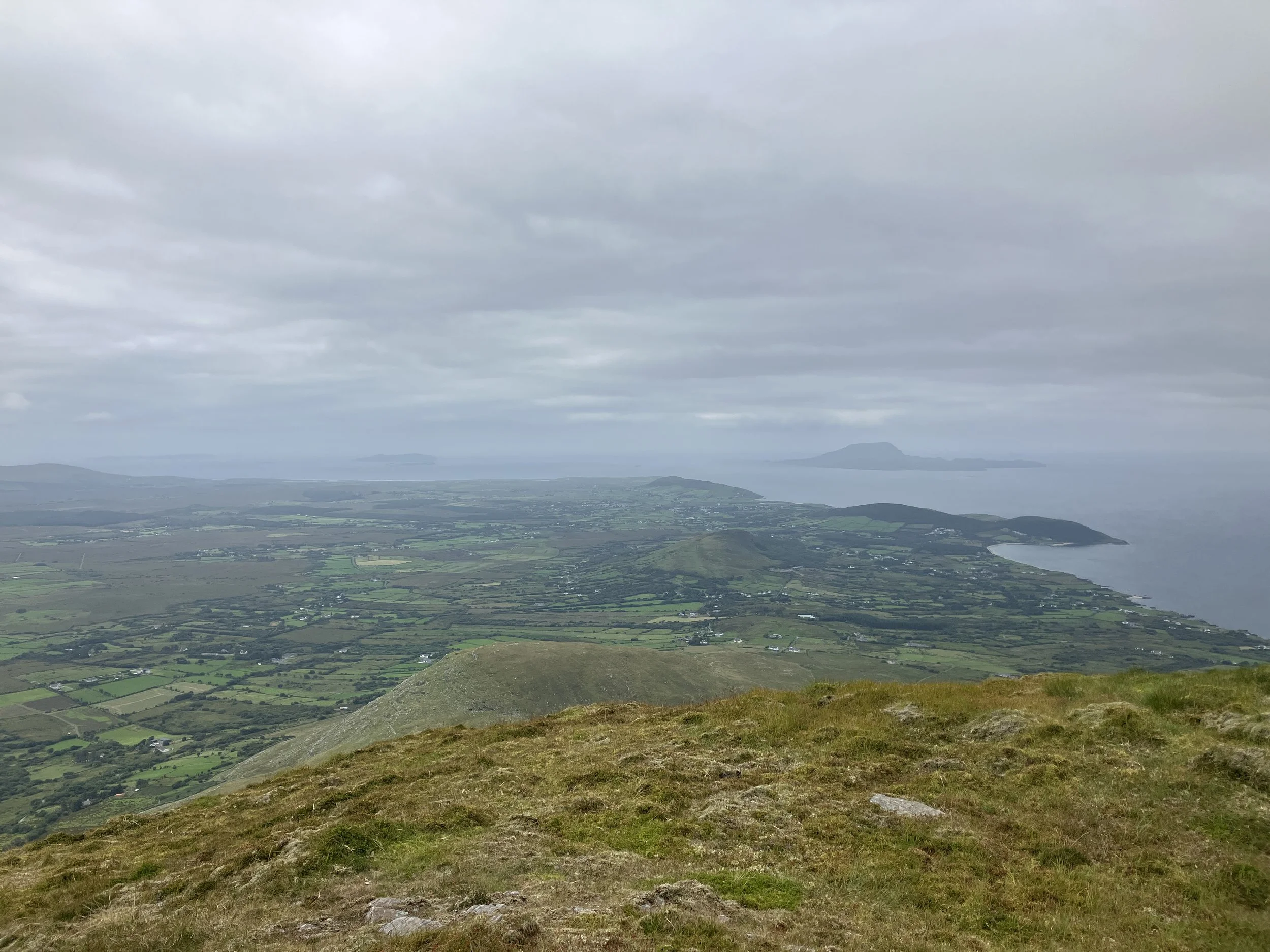A Journey Through Time on Ben Goram
Mist over the Reek and gliding jack daw
The mist hangs low over the green-gold landscape, a familiar blanket in the west of Ireland, yet today it feels like a secret being held just for us. The ascent begins on the slopes of Ben Goram, a sentinel of Mayo’s landscape, less famous than its neighbour, Croagh Patrick—or 'The Reek' as it is known locally—but no less majestic.
Looking from the shoulder of Ben Goram to Claire Island
The climb is a steady one, with the wind carrying whispers of the Atlantic. We navigate the rugged terrain, each step a conversation with the mountain. The slopes are a tapestry of purple heather and low-lying wild bilberry, their small, dark fruits a tiny reward for those who look closely. As we reach a slight rise, the ground flattens into a circular plateau. There, nestled amongst the heather and gorse, is what appears to be the faint outline of a ring fort. Its weathered stone foundation is barely visible, a testament to its age. We settle down to eat our sandwiches, finding shelter from the wind in a ring of stones on the edge of the suspected fort. Someone had been here before us, leaving a few sods of turf and kindling, as if in silent invitation. Above us, a kestrel uses the wind to its advantage, flying at an incredible speed, a living arrow against the grey sky, while the distant echo of a jackdaw's cry is carried on the breeze. My mind immediately drifts back in time to the Iron Age, to the people who once called this place home, who sought refuge or held court in this very spot. What stories would these stones tell if they could speak?
This peaceful solitude stands in stark contrast to the experience one might find on nearby Croagh Patrick. I've read that the writer Robert Macfarlane once expressed a certain disdain for the modern pilgrimage, mentioning the crowds and "chocolate-bar wrappers" that litter the ascent. Up here, on Ben Goram, there is none of that. Despite its proximity to The Reek, there is an absence of crowds and the trappings of modern pilgrimage. Instead, you find a serene, majestic nature that feels untouched and deeply ancient, a true 'wild place' that whispers its history rather than broadcasting it to the masses.
Drumlin islands of Clew Bay
The descent is a change of pace, guiding us toward the coast and the village of Lecanvy. The view opens up dramatically, a breathtaking panorama of Clew Bay, with its famous drumlin islands scattered like jewels. It’s here, as we make our way down to the shoreline, that another layer of history reveals itself. It feels like the logical route to access the settlement on the ridge of Goram, connecting the sea to the sky. It's not hard to imagine this very path being trod by people in pagan times for the Lughnasa festival, a celebration of the harvest. A powerful thought to think that our steps, on this very path, echo those of people from over a millennium ago, all seeking a connection to something greater than themselves.
Reaching Lecanvy, we are met with the scent of salt and the gentle sound of waves lapping the shore. The journey is over, but the memories of the Iron Age fort, the literary thoughts of Macfarlane, and the ancient pilgrimage route linger. Ben Goram may be a lesser-known peak, but for those who take the time to listen, it has a story as rich and deep as the land itself.







